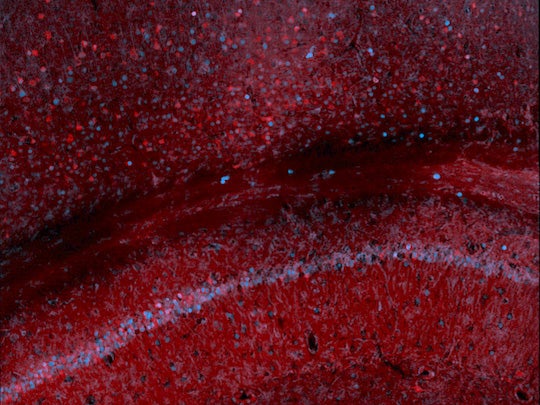The brain is the most protected organ in the body, encased in a complex and nearly impenetrable barrier of specialized blood vessels. While this specific physiological configuration protects you from outside invaders, it also makes it difficult for researchers to study how specific genes are expressed and how those changes in gene expression can lead to disease.

by Kayt Sukel
Special to Rice News
Rice University scientists have developed a non-invasive method to monitor the dynamics of gene expression in the brain, enabling research into brain development, cognitive function and neurological diseases, according to a study published in Nature Biotechnology.

Rice bioengineer Jerzy Zablowski and his colleagues have developed a unique class of molecules, known as released markers of activity (RMA), that can be used to measure gene expression in the brain using a simple blood test.
“Typically, if you want to look at gene expression in the brain, you have to wait to do a postmortem analysis,” said Zablowski, an assistant professor of bioengineering at Rice’s George R. Brown School of Engineering. “There are some more advanced neuroimaging techniques that can do this, but they lack the sensitivity and specificity to track changes in specific cell types.
“With the RMA platform, we can introduce an artificial gene expression indicator into the brain, which produces a protein that can cross the blood-brain barrier. We then measure the expression of the gene of interest with a simple blood test. I can measure changes.”
Szablowski first considered the possibility of an artificial gene expression indicator after observing that the brain would quickly clear injections of antibody therapy.

“Every time these injections were given, the antibodies simply disappeared; they didn’t stay in the brain long enough for effective treatment,” he explained. “But we thought the failure of antibody treatments could be repurposed to our advantage. What if we took the part of the antibody responsible for this escape and attached it to a protein that could be easily detected? Then we can see where, when, and how “A particular gene was expressed more in the brain.”
Other researchers had already determined that antibodies cross the blood-brain barrier using the nascent fragment crystallizable receptor (FcRn), a gene that controls the level of antibodies present throughout the body. Using sophisticated bioengineering techniques, Szablowski and his team manipulated the part of the antibody that helps a normal reporter protein cross the blood-brain barrier to take advantage of this biological escape route. When the group attached RMA to a specific gene and expressed that gene in the brain of a mouse, they were able to mirror that expression in the animal’s blood.
“This method is very sensitive and can track changes in specific cells,” Szablowski said. “The production of this protein in about 1% of the brain increased its blood levels by 100,000 times compared to baseline. We can specifically track the expression of this protein with just a blood test.”
For now, Szablowski sees MRIs as an important research tool to help scientists better monitor gene expression in the brain. For example, he said, the RMA platform could be used to see how long new gene therapies persist in the brain over time.
“We can track these new treatments with just a blood test and monitor them over time because the RMA platform is non-invasive,” he said. “But we can also use RMA to study gene expression in relation to disease. Being able to track changes in the expression of different genes will help us understand what causes disease and how the disease itself changes gene expression in the brain. development, or even how to prevent neurological diseases.
Possible References Used







